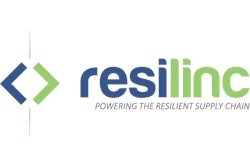
In some markets, 3D printing is already dramatically altering the discipline of supply chain risk management (SCRM) and resiliency, making many relatively modern concepts and best practices obsolete. For many other markets, it’s just a matter of time before 3D printing drives supply chain risk managers to either completely redefine what they do or find another career.
Many opinions and a lot of research has been published over the past decade on how 3D Printing will impact supply chain management in general. Many of the recurring themes—including reduced inventory, decreased product and supply chain complexity, and shorter lead times—have a direct and profound impact on supply chain risk. However, no analysis has yet to look at the 3D printing phenomena exclusively through a supply chain risk and resiliency lens.
SCRM Today
Supply chain risks take many forms, including business continuity risk, brand and compliance risk, capacity risk and cybersecurity risk. Many of these risks are born, and fester in large, global and highly complex supply chains. In most cases, they are the result of a lack of visibility into a company’s upstream (multi-tier) supply chain actors beyond their direct (Tier 1) suppliers. After all, you can’t manage what you can’t see.
As a result, a key focus of SCRM initiatives is to first map and visualize the supply network at the factory site level. The risk-related data collected about the configuration of the network, the nodes of the network (company-owned factories and supplier sites), and the flow of materials and parts is then analyzed to determine threats and vulnerabilities for proactive mitigation.
Inevitable disruptive incidents that are not proactively addressed are dealt with by processes and tools for reactive risk management. These include early detection through global event monitoring, crises response playbooks and visualization technology-enabled war rooms.
Digital Supply Chains
For a rapidly growing number of product categories, 3D printing fundamentally changes the supply chain risk management planning assumption that supply chains are necessarily global and highly complex, and that the fundamental building block of all solutions is visibility. Over time, 3D printing will collapse these multi-tier supply chains.
There are three fundamental attributes of the 3D printing-enabled digital supply chain that drive this collapse. First, the economics that drove globalization of production (i.e. cheap offshore labor plus transportation costs is cheaper than domestic production) does not apply. Less labor-intensive 3D-printing operations, combined with the opportunity to manufacture to order and deliver on demand, will dramatically tip the calculus on whether to onshore or offshore manufacturing toward reshoring.
Second, finished products and components do not necessarily consist of subcomponents, ingredients and materials sourced from upstream suppliers. 3D printers are capable of dramatic product simplification or consolidation. With 3D printing, a single process is used to print out finished products using a single raw material (e.g. plastic, ceramic or metal). As a result, many tiers of processing and assembly, if not all in some cases, can be eliminated.
Third, because supply can be printed on demand, the need to manage upstream inventory at every level of the supply chain is eliminated. Thus, 3D printing makes the most basic tool of supply chain risk, inventory buffering, obsolete. In fact, digital supply chains and 3D printing make inventory obsolete.
This applies to downstream multi-tier logistics networks, which include regional and local distribution centers and warehouses, and retail point-of-sale locations. Ultimately buyers/consumers will be able to print products on demand at their own premise or local FedEx store. In this imminent future, shipping physical products is obsolete; the only thing that is delivered is a license to print a product design file.
In sum, today’s complex, global supply chains are the result of complex products built using cheap globally sourced labor. Emerging digital supply chains are not actually chains, but supply exchanges that electronically fulfill supply requirements for more customized products on demand and closer to the buyer.
Reassessing Traditional Supply Chain Risks
The infusion of digital technology is rapidly unraveling assumptions and principles that have underpinned effective supply chain management for decades. Therefore, it is not surprising that the management or even relevance of a variety of supply chain risk types will be permanently altered by one of the most important engines of the digital supply chain transformation—3D printing.
Business Continuity Risk
Business continuity risk is the risk that a sub-tier supplier will not be able to deliver supply as a result of an unplanned business disruption. These disruptions result from a variety of causes, such as extreme weather, factory fires, labor strikes, geo-political events, and financial or organizational challenges.
In a 3D printing-enabled fully digital supply chain scenario, location-based and operational risks associated with suppliers and sites are irrelevant, as well as network design risks, such as supply bottlenecks. This is because there is no supply chain. As a result, the common risk management process of gaining sub-tier supplier visibility in order to assess disruption risk potential is obsolete. And the common risk mitigation exercise of identifying single or sole sources, and qualifying alternate suppliers, is obsolete as well.
Moreover, even the more forward-thinking SCRM concepts, like product design for resiliency, may not apply. The proactive practice of working with product design and engineering teams to design out components that give rise to potential business continuity risks becomes irrelevant. This is the case in manufacturing scenarios in which products, consisting of assembled components, are redesigned to be 3D printed as a single consolidated SKU.
Brand and Compliance Risk
Supply chain brand and compliance risk refers to the reputation and financial risks of being linked with a supplier that was singled out by a government, nongovernmental organization (NGO) or media entity as having illegal or questionable business practices. Frequently addressed under the umbrella of corporate social responsibility (CSR), these business practices can relate to issues of worker safety and conditions (including forced or slave labor, and fair labor contracts), environmental impact or other legal/regulatory breaches. In the case of compliance risks, there may be more immediate financial penalties, while brand risks fueled by social media opinion can have longer-term financial consequences.
Like business continuity risks, brand and compliance risk presumes a multi-tier supply chain and a lack of visibility to all actors, and in this case more particularly, the bad actors. The reshoring enabled by 3D printing eliminates these traditional sub-tier brand and compliance risks by largely eliminating the geographically remote and largely unmonitored sub-tier.
3D printing can also have a beneficial impact on brand because it assures a greener manufacturing process. 3D printing is also referred to as additive manufacturing because it builds an object by adding ultrathin layers of material one by one. As a result, there is very little waste. This contrasts with traditional subtractive manufacturing in which products are produced by the controlled removal of material in which waste and scrap material is a significant byproduct.
Capacity Risk
Today, supplier capacity risk is another factor supply chain managers need to evaluate in order to ensure the uninterrupted flow of parts and products necessary to service fluctuating customer demand. A lack of visibility into supplier capacity constraints can directly lead to lost revenue and market share, and declines in customer satisfaction, if companies cannot respond to supply shortages and demand surges.
In select markets where 3D printing applies today (e.g. where there are a variety of customized, low-volume finished products such as medical devices), capacity risk is eviscerated by the ability to print supply on demand. There is no need to carry inventory or safety stock. It is important to note, however, that 3D printing has yet to prove itself in markets for high-volume standardized products in which capacity risk will continue to exist.
Security Risk
Contemporary supply chain security risks include both physical security risks, such as tampering with products or their packaging, as well as cybersecurity risks. Cyber risks may include information breaches related to the location of supply in transit, associated financial transactions and contracts, design specs and descriptions, intellectual property (IP) and digital usage rights.
Clearly, the digital supply chain eliminates most physical supply chain risks. However, the cyber threats are best described not as diminished or amplified, but as transformed. In some respects, the cyber challenges can be viewed as more manageable, while in others, it creates whole new issues and vulnerabilities. For example, the collapse of the largely invisible n-tier supply chain makes the potential sources of upstream breaches much more contained. Yet, the decentralization of production at the point of consumption shifts and proliferates points of failure downstream.
At the same time, the collapse of the multi-tier upstream supply chain means there are fewer, but more obvious and critical raw materials suppliers to attack. These include the providers of plastics, metals and metal alloys, ceramics, and a variety of emerging materials that are input directly into the 3D printer.
And of course, this opens up a whole new world of digital rights management challenges. Are we going to see the next-generation Napster providing free downloads of unlicensed product design files for printing? Think of the security implications for 3D printed pills, body parts and firearms—all of which are well beyond the demonstration phase.
The Third Industrial Revolution
Futurists believe that 3D printing signals the beginning of a third industrial revolution, succeeding the production line assembly that dominated manufacturing starting in the late 19th century. Clearly, its usage is in its relative infancy and confined mainly to its sweet spot: low volume, low to moderate manufacturing complexity, and high customization level products and parts.
However, those that are not following this technology closely and have a stake in its future will be surprised, if not shocked, to find its growing application and usage beyond prototyping and research. 3D printing is already here to stay in a variety of industrial and consumer manufacturing verticals, including apparel, construction, electronic and medical devices, automobiles and aerospace.
While you are not going to see a 3D-printed car any time soon, you can expect that many or most parts will be 3D printed. As a result, in the near term, you can expect today’s complex supply chains to evolve to hybrid physical-digital networks, while other markets go all digital. Even the food industry is looking at 3D printing to customize and personalize its food packaging. It’s hard to imagine an industry that will not be affected by 3D printing, and this will change the notion of supply chain risk management and resiliency forever.













![Pros To Know 2026 [color]](https://img.sdcexec.com/mindful/acbm/workspaces/default/uploads/2025/08/prostoknow-2026-color.mduFvhpgMk.png?ar=16%3A9&auto=format%2Ccompress&bg=fff&fill-color=fff&fit=fill&h=135&q=70&w=240)




